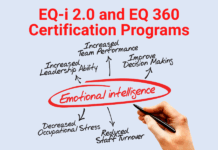
How can YOU, as a learning and development leader motivate your team members to learn?
This burning question is what keeps me up at night. I have yet to meet the L&D (learning and development) leader that’s wholly unconcerned about their learners.
As the Talent Development Specialist at Master Electronics it is my job to create and deliver learning experiences for our team members. Our learning function and learning culture are growing.
Whose Got Time to Learn
Competing priorities are real and often leap frog to the head of the line over learning and development.
I get it. It’s challenging. I mean, considering our personal lives outside of work.
How often do you skip reading a chapter in a book you have because you’ve got to get the kids to practice after work and school? Or friends visit and want to hang out? Or, frankly, you’re beat and want to get some rest? Veg out in front of the T.V., Netflix, Hulu or Amazon on your device of choice.
I take my responsibilities seriously, as do my peers. Other learning leaders in my company. People I’ve met at Association for Talent Development (TD) South FL, South Florida Organization Development Network (SFLODN). And more recently, folks I’ve met at Training Industry Conference and Expo (#TICE2017) and the Adobe eLearning Conference.
Well Known Types of Motivation
Much has been written about extrinsic versus intrinsic motivation. High level elements of both follow, but for further reading click here.
- Intrinsic motivation, in part, is the self-desire to seek out new things and new challenges, to observe and to gain knowledge.
- Extrinsic motivation, in part, refers to the performance of an activity done to attain a desired outcome and comes from influences outside of the individual.

The truth is, all of us at different points, under different circumstances are driven by either type.
Nonetheless, I posed this burning question to some of the bright minds in our field. Here are their insights.
Effective Instructional Design is Fundamental
Kendra T. Lester is an Instructional Designer (ID) for JetBlue based in Orlando, FL.
“That’s a very good question, one that we are constantly trying to find the answer to. The simple answers are to make training relevant and worth the learner’s time to help build buy-in, and make it fun and engaging so that they want to learn. I will say, the latter is the hardest of the ‘simple answers’.”
Kendra was kind enough to attach resources to help me dig deeper. One titled, 6 Rules to Designing eLearning for Maximum Motivation by Ethan Edwards, Chief Instructional Strategist at Allen Interactions (you can grab your copy here).
The point, in the free downloadable eBook, that stuck with me most was number four, Appeal to Emotion. Because, per Ethan, “learning is enhanced when content is tied to elevated emotions.”
Do you agree? We’d love to hear your thoughts. Email us at info@LEADx.org
When I read that, from the perspective of instructional design, I agreed 100%.
Technology Plays a Role in Motivating Learners

I love learning new things, which is still mind-blowing to the adult me, because the school-age me, was a mediocre student at best. Learning with ATD (Association for Talent Development) is a breeze, because members get frequent access to webinars, White Papers, Case Studies and the like.
One such webinar, presented by Susie M. Lee, Director of Client Engagement at Degreed was titled, Engaging Learners: How to Think Like a Marketer. Talk about a big meat sandwich. I’ve reviewed her slide deck multiple times since the webinar. There was a lot there, so I’ll isolate just one thought.
Personalization.
Susie’s message contained the idea of targeted aspirational learning cycles, within the context of a learning ecosystem.
That’s a mouthful.
Here’s the gist:
When you consider how we learn in the modern world of work, because of technology, the corporate learning management systems (LMS) of the past (the main content provider) has been replaced.
Nowadays, we learn from the web everyday about nearly everything.
How many times, during your workday, have you searched something to understand that concept better?
I do it constantly. Sometimes, saving files, printing things out, taking notes and even bookmarking the site to visit again later.
How does this tie to the burning question you’re wondering? Well, the point is, learners learn constantly outside the LMS. With that in mind, why not instead create a learning ecosystem that records learning where it happens (inside or outside the LMS) and give team members credit for it all. Potentially, a fantastic point to invoke motivation. Platforms like Degreed help with that.
Learners and the Business
Dan Menden, CPTM (Certified Professional in Training Management), Managing Director at Mensch Learning Solutions encouraged me to look at it from a business and learner perspective.
“If the workforce is not ‘required' to take training…then they are either not aware of the content or they don't find it relevant. Approach this as a business problem and not a learning problem – What is the risk to the business if people are not actively engaged in developing themselves?”
That last part, helped a great deal. It’s productive to think of our young learning function at Master Electronics, not as a project (like I normally do) rather a journey. One that takes time, care and consideration. Dan is 1000% correct, nobody wants learning that is irrelevant to them.
Straight Talk and Key Building Blocks
These conversations happened over the course of weeks. With each one I gained more insight, more wood to toss into the fire, more ways to stoke the flame of my burning question.
I was beginning to see; there is no black or white answer. It’s layered. Furthermore, the context changes with every organization, because each company has its own personality, undergirded by its people and culture.
John Eades is an author (FML Standing Out and Being a Leader) and CEO of LearnLoft (John’s team won a Readership Award from Training Industry Inc. at the 2017 conference).
He gave it to me straight.
“Be a salesperson – put your sales hat on and look for creative ways to “sell” the team on the benefit of taking the training. Elective training gets an 80% lower completion rate on average than directive training.”
This one struck me hard. I’m a huge fan of elective versus compulsory learning. But, now I get it. It goes back to the extrinsic versus intrinsic motivation. Some folks need external nudges. For more insights, check out John’s blog post on the same topic.
If you’re still with me, thanks for reading this far, taking this journey with me. I want to thank these business pros for lending their voices to this burning question and for giving me permission to share with you, what I’ve learned from them.
Dr. Allen Partridge is well-known in the L&D profession and frequently speaks at global eLearning conferences as Adobe’s Senior eLearning Evangelist.
He spelled it out succinctly. Communicate relevance. Use the learners’ desire to demonstrate mastery and craft the messaging as opportunities to get ahead. Allen was kind enough to expand on the topic in his blog post after our communication.
Okay, pat yourself on the back for reading to the end. I’m applauding you right now! Job well done.
I’m eager to hear your contribution to this conversation, email your thoughts to info@LEADx.org.
In Conclusion
Here are my take-aways on these conversations, punctuated by my friend, career coach, Jay Forte, author and founder of The Greatness Zone.
Per Jay, a part of my job as a L&D pro is to design, create and deliver learning content that removes (as much as possible) any excuse that any learner would have to NOT consume learning content.
Furthermore, the reality is, though we want 100% engagement, 85% would be stellar.
Here’s my final five main lessons:
- Start with the end in mind. Design and create engaging relevant content, that is aligned with the enterprise’s goals, enhances team members’ lives (at home and on-the-job-performance). Because learning and development is more than ticking a box saying “we delivered the training”. This is about positively impacting the lives of others.
- Example: At Master Electronics, we have a Learning Committee that vets topics. I ping these folks constantly for input & feedback regarding learning content and initiatives.
- When we get step one correct, find the right balance of elective and directive learning and development. Choice is a huge motivator, versus, dictating what to consume 100% of the time. Both are needed because all humans deal with the undercurrent of extrinsic and intrinsic motivation.
- I would love to hear how your organization implements this tightrope-walking-act. Our learning function is considering a future implementation of this element.
- Leverage technology. The old school LMSs don’t cut it. We should approach corporate learning as an ecosystem. Our teams learn constantly consuming content from multiple sources. It behooves L&D pros to take advantage of that and give credit where credit is due. Furthermore, there are features modern LMSs like Adobe Captivate Prime have that we once considered bells and whistles, now, we expect our LMS to be fully mobile without extra effort.
- Technology has great potential, if we get it right. Adobe Captivate Prime is a younger LMS in a crowded industry and is the platform of choice for us. With the capabilities for leaderboards, informal learning through conversations, connectors to third-party providers and mobile learning, it is an LMS for modern times.
- Remember the human connection. Keep learners at the forefront of what you do as a L&D professional. Talk to them, get their input and feedback. Be open to making changes to content after it has been published. Think iterative, to keep things fresh.
- One thing I’ve learned from my Senior Vice President, Riad Nizam, is to just pick up the phone and talk to people. Yes, surveys give a bigger bang for the buck, for example when conducting a down-and-dirty needs analysis, but, a one-on-one conversation goes a long way to building connections that matter.
- Enjoy the journey. My biggest lesson learned from the kindness of the folks mentioned in this article is the journey. Before now, I approached my job like a project. A firm start and end date. But, it isn’t quite that. Sure, I have projects now and will continue to have them. However, overall, growing a learning culture is a marathon, not a sprint. I understand that better, now. (Thank you Dr. Charlene Rousseau, CEO, Envisionary Development Consulting for frequently reminding me of this one.)




